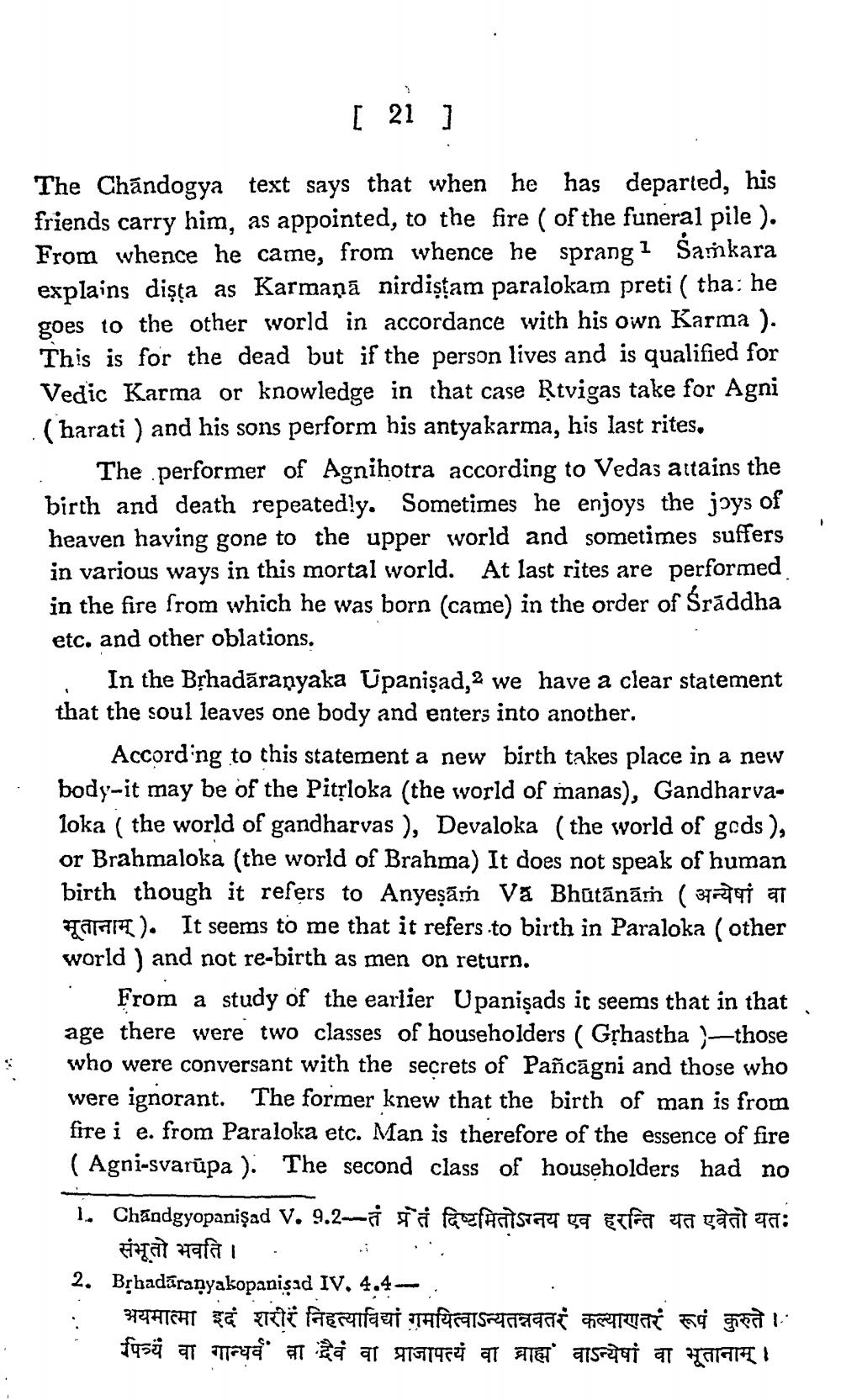________________
[
21 ]
The Chándogya text says that when he has departed, his friends carry him, as appointed, to the fire ( of the funeral pile ). From whence he came, from whence he sprang 1 Samkara explains dişta as Karmaņā nirdistam paralokam preti ( tha: he goes to the other world in accordance with his own Karma ). This is for the dead but if the person lives and is qualified for Vedic Karma or knowledge in that case Rtvigas take for Agni (harati ) and his sons perform his antyakarma, his last rites.
The . performer of Agnihotra according to Vedas attains the birth and death repeatedly. Sometimes he enjoys the joys of heaven having gone to the upper world and sometimes suffers in various ways in this mortal world. At last rites are performed in the fire from which he was born (came) in the order of Śrāddha etc. and other oblations. . In the Bșhadāraṇyaka Upanişad, 2 we have a clear statement that the soul leaves one body and enters into another.
According to this statement a new birth takes place in a new body-it may be of the Pitțloka (the world of manas), Gandharvaloka ( the world of gandharvas ), Devaloka (the world of gods ), or Brahmaloka (the world of Brahma) It does not speak of human birth though it refers to Anyeşāın Va Bhūtānām ( 37 af Warnia). It seems to me that it refers to birth in Paraloka (other world ) and not re-birth as men on return.
From a study of the earlier Upanişads ic seems that in that age there were two classes of householders (Gșhastha those who were conversant with the secrets of Pañcāgni and those who were ignorant. The former knew that the birth of man is from fire i e. from Paraloka etc. Man is therefore of the essence of fire (Agni-svarūpa ). The second class of householders had no 1. Chandgyopanişad V. 9.2- ja facefinitsiate ga ata qa gaat ta:
fiyat varai . . . 2. Bịhadāraṇyakopanisad IV. 4.4
अयमात्मा इदं शरीरं निहत्याविद्यां गमयित्वाऽन्यतन्नवतरं कल्याणतरं रूपं कुरुते । पित्र्यं वा गान्धर्व' वा दैवं वा प्राजापत्यं वा ब्राह्म वाऽन्येषां वा भूतानाम् ।




